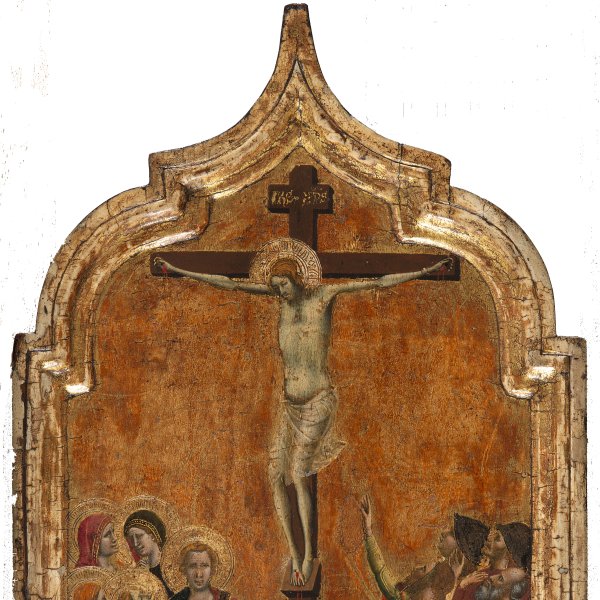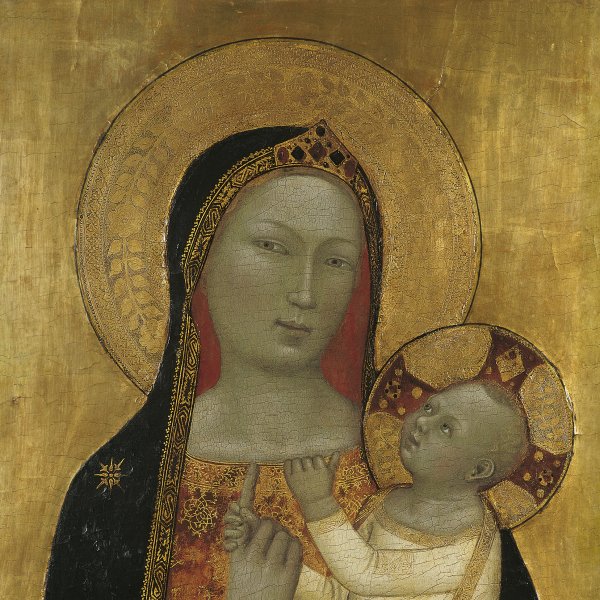Bernardo Daddi
Bernardo Daddi was born in the last decade of the 13th century and on the death of Giotto became the most important painter in Florence. His name is recorded between 1312 and 1320 in the guild of the Arte dei Medici e Speziali. Among his earliest works from the years prior to 1330 are the frescoes for the Pulci-Berardi chapel in the church of Santa Croce in Florence. They depict The Martyrdom of Saint Lawrence and Saint Stephen and reveal his dependence on Giotto’s models. Also from this period is the Triptych with the Virgin and Child of 1328 (Galleria degli Uffizi, Florence), which is signed “Bernardus”.
In the 1330s Daddi ran a large workshop with numerous assistants who produced a large number of small paintings intended for private devotion. Among his most important works of that decade are the Bigallo Triptych of 1333 and the Uffizi Polyptych with The Virgin and Child and Saints. During this period Daddi’s work was influenced by Ambrogio and Pietro Lorenzetti. Dating from later in his career are the triptych in the Courtauld Institute, London, of 1338, the polyptych in Santa Maria Novella, of 1344, and the Madonna for the tabernacle by Orcagna of 1346-47. Daddi died in 1348 during the Black Death.






